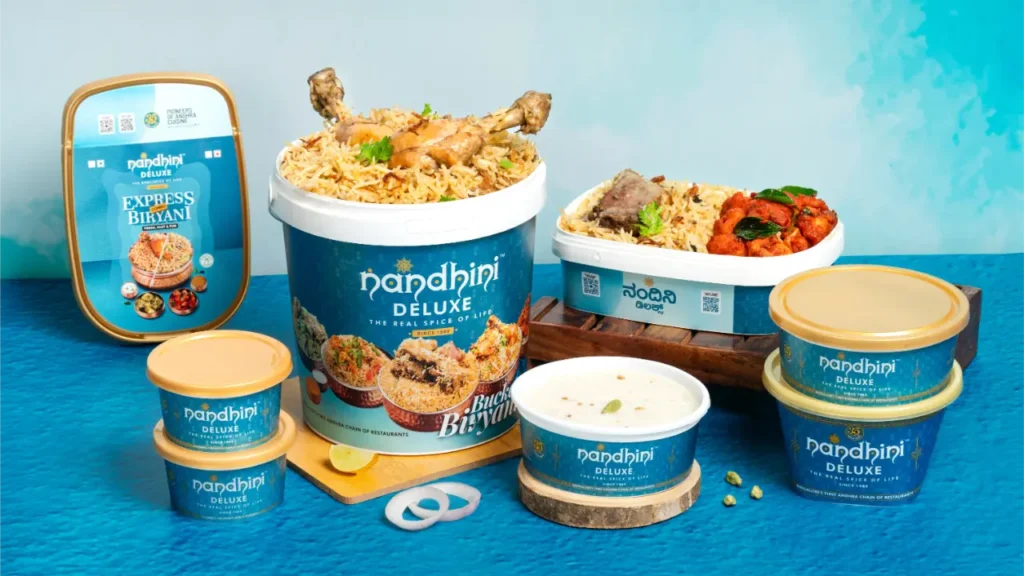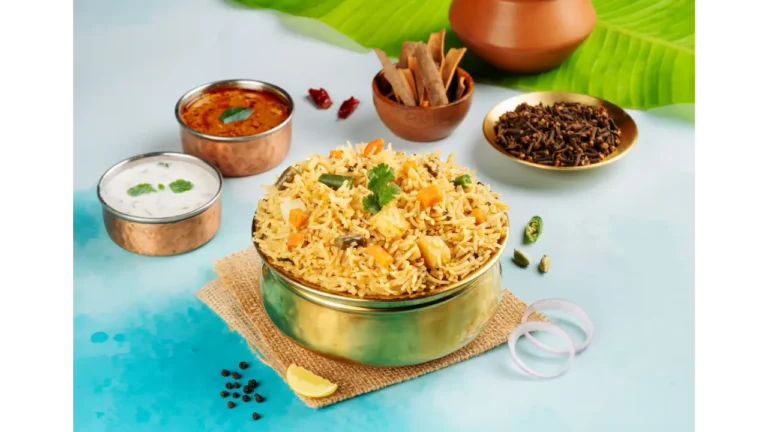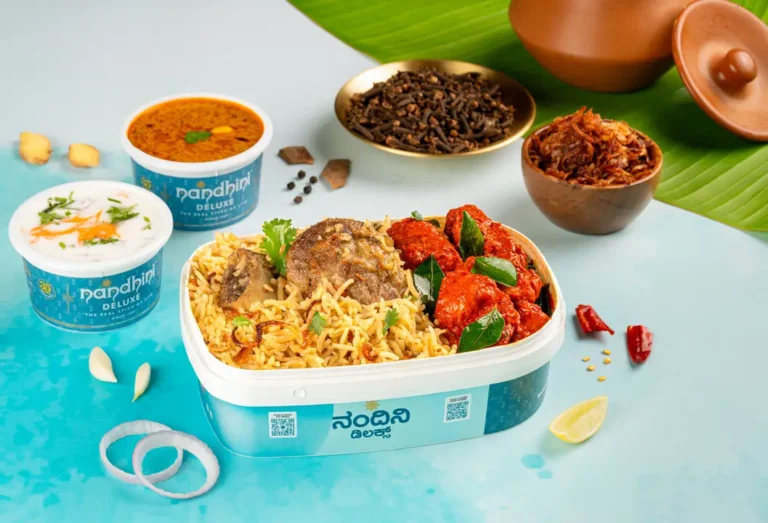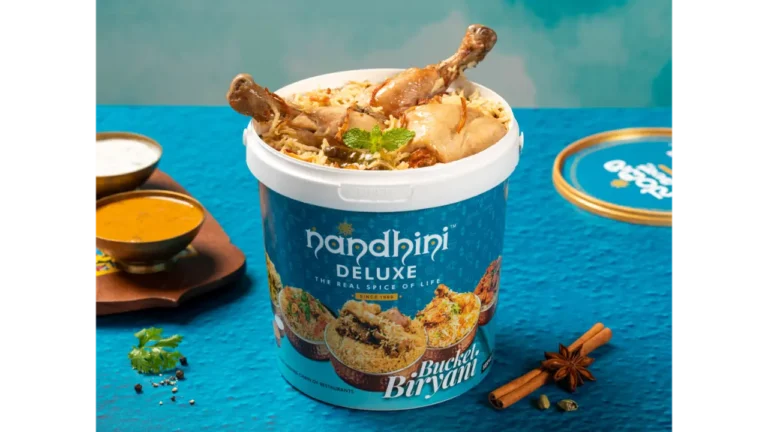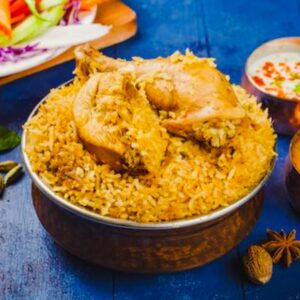Introduction
Bangalore orders Andhra food for two reasons that rarely change: spice-led satisfaction and service predictability. Delivery must keep grains separate, gravies intact, and sides chilled. Takeaway must pass the elevator test without spills and reach the table with heat still blooming. Andhra cuisine answers these jobs with chilli-forward profiles, sturdy packaging, and menu formats that scale from a single plate to a family tray. Family packs, in particular, have become the city’s weeknight shortcut: one box that solves protein, rice, and condiments with minimal friction.
Clarity beats guesswork at checkout. Item price, packaging charge, taxes, platform fee, and distance-based delivery fee stack into the total. The container matters as much as the recipe. PP5 tubs and trays suit microwave cycles. Foil locks heat but needs careful transfer before reheating. Raita volume and sealed lids control melt on the plate. For high-heat dishes like gongura gravies or fry-piece biryani, the right tray depth keeps texture tight during transit.
Nandhini Deluxe Restaurants anchors this landscape as an Andhra specialist with citywide branch coverage, consistent spice signaling, and a delivery cadence built for Bangalore’s rush windows. The brand’s ordering map spans phone, brand site, aggregator apps, and branch pickup. Family pack biryanis, combo boxes, and Andhra gravies travel in sealed formats that balance steam retention with spill resistance. For office lunches, late-night orders, and weekend family tables, the playbook is simple: match group size and heat preference to the correct pack, then pick the channel that reaches the door fastest with the least fee friction.
Key Takeaways
- Family packs reduce cost per head and keep flavors consistent across a group.
- Packaging type decides reheating safety and texture on arrival.
- Total bill equals item price plus packaging, taxes, platform fee, and delivery fee.
- Nandhini Deluxe covers multiple order channels and reliable dispatch windows.
- Pickup beats delivery during extreme peak or rain if distance is short.
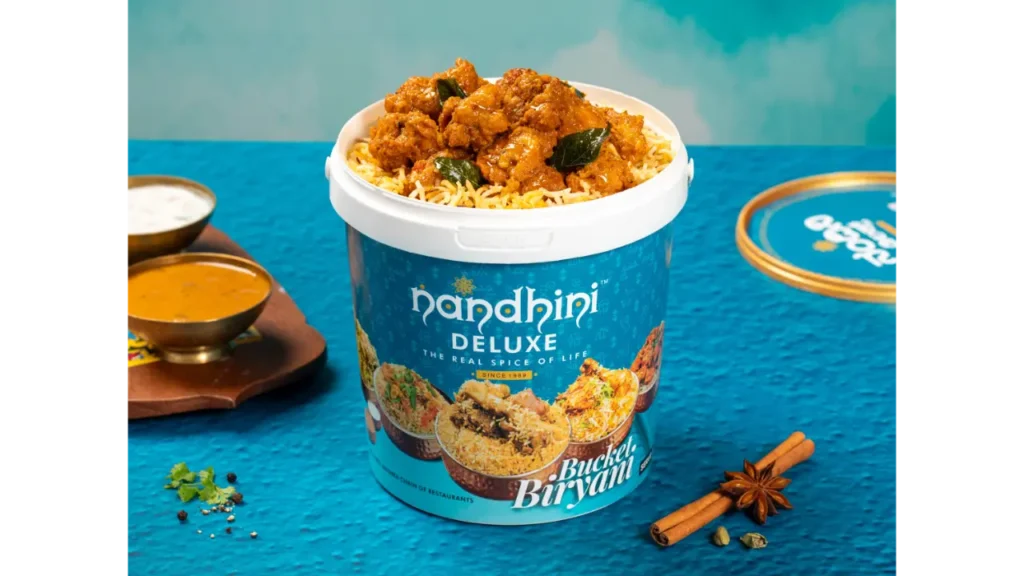
Ordering Andhra cuisine in Bengaluru
Start with three filters: heat preference, group size, and budget. Heat-first diners gravitate to chilli-forward biryanis and fry-piece variants. Balanced palates lean toward biryani with extra raita, curd rice add-ons, or milder gravies. Group size divides choices cleanly. A single diner chooses an individual plate or mini combo. Two to three diners can pair one biryani with a gravy and extra rice. Four and above unlock economy with a family pack plus sides.
Family pack versus individual plates hinges on price-per-serve and container geometry. Family packs arrive in wider, shallower trays that preserve grain separation and simplify plating. Individual plates travel denser and suit short distances. For dinner rush or rainy evenings, closer branches and pickup windows reduce transit loss and spill risk. Delivery stays efficient for mid-distance routes when the dispatch-to-door time remains inside a 30 to 45 minute band.
Channel selection follows intent. Brand site or phone suits repeat orders, notes, and branch pickup coordination. Aggregator apps optimize for discovery, coupons, and live tracking, with the trade-off of a platform fee. Pickup wins when proximity is under ten minutes and parking is predictable. Delivery wins for office floors, late-night corridors, and apartment towers where handoff time is minimal.
Sides and condiments finalize the plan. Raita volume moderates chilli bloom; pachadi and pickles raise contrast. Boiled eggs stretch biryani portions without changing spice identity. Beverage pairings like buttermilk or lime-based coolers manage palate fatigue. For kid-friendly tables, raita double-ups and a plain rice side make Andhra mains accessible without losing character. With these levers set, checkout becomes a formality rather than a gamble.
Nandhini Deluxe ordering map
Nandhini Deluxe operates a clear, Bangalore-first ordering framework. Four channels cover most needs: brand website for structured browsing and repeatable carts, phone ordering for branch-coordinated pickup, aggregator apps for discovery and tracking, and walk-in takeaway for immediate handoff. Availability typically spans lunch to late dinner, with high-volume dispatch blocks during 12:30–2:30 pm and 7:00–10:30 pm. Branch density shortens routes, which preserves rice separation and gravy integrity during weeknight peaks.
The family pack catalog centers on chicken, mutton, and vegetarian biryani trays labeled with serves counts that suit four diners comfortably or five with add-ons. Included raita is standard; boiled eggs appear by variant or as low-cost extras. Andhra gravies, fry-piece mains, and combo boxes create modular builds around the core tray. A typical group order pairs one family pack with an additional gravy, extra raita, and a plain rice or curd rice buffer to stabilize heat for mixed palates.
Dispatch cadence stays practical. Orders flow in batches to align kitchen throughput with rider availability. Short-distance deliveries benefit from sealed trays with anti-spill lids and outer cartons that protect corners. Pickup works best when the branch confirms readiness before arrival, reducing lobby wait and keeping the pack hot. Transparent billing separates item price from packaging charge, then adds taxes, platform fee where applicable, and a distance-tuned delivery fee. Edge cases such as heavy rain or festival traffic can extend handoff times; in those windows, branch pickup often outperforms long-haul delivery.
For recurring needs, contact records and saved favorites speed reorders of specific SKUs. For bulk office lunches, pre-scheduling with a nearby branch secures on-time dispatch and consistent tray counts. In every scenario, the Nandhini map points to the same outcome: Andhra spice profiles delivered in containers that protect heat, aroma, and texture while keeping the total predictable at checkout.
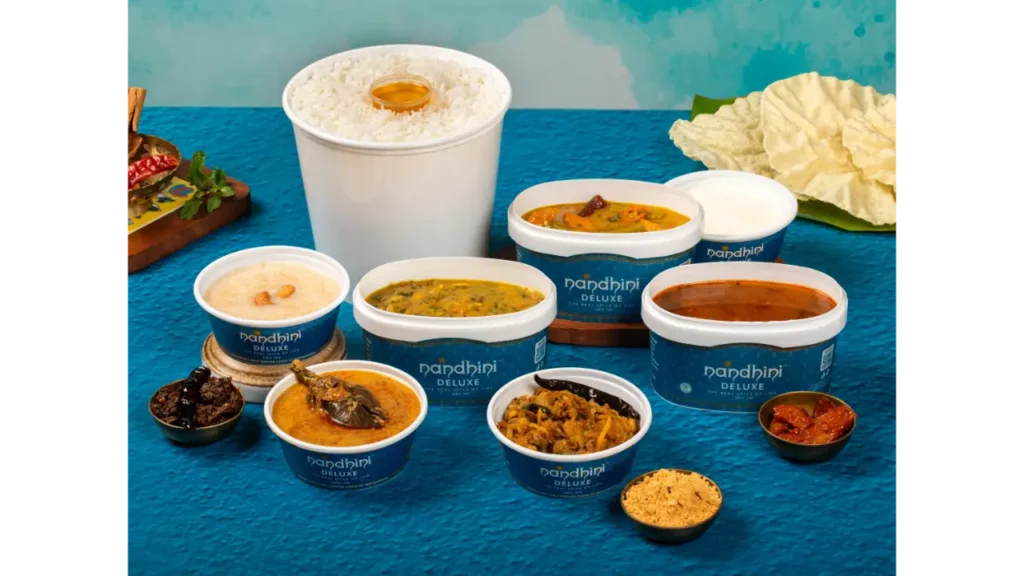
Family packs explained
Family packs solve three problems at once: portion planning, cost per head, and thermal stability. Andhra biryani trays for families typically list chicken, mutton, and vegetarian variants with a serves count of four as a safe baseline. Volume stretches to five with add-ons like boiled eggs, extra raita, or a plain rice buffer. Grain choice is long-grain basmati in most Bengaluru kitchens, which keeps separation intact during transit and allows gentle reheating without clumping. Heat profile skews chilli forward. Chicken reads brighter and faster on the palate, while mutton carries deeper fat-backed warmth.
Tray geometry matters. Wider, shallower trays reduce compression and steam pockets, so top and bottom layers taste more consistent. Lids with gasket ridges cut down on spills from sharp turns and elevator jolts. A second outer carton prevents lid flex and keeps condensation from wetting napkins or cutlery sachets. Default inclusions usually feature raita in a separate tub. Some variants bundle boiled eggs or a small pickle box, which tightens flavor contrast and helps stretch portions.
Combos built around Andhra gravies work well when group preferences diverge. Gongura or ulavacharu mains anchor the meal with sour or earthy notes. Fry-piece mains carry concentrated surface flavor that stands up to travel. Pairing strategy stays simple. One family biryani plus one gravy covers four diners. Add curd rice for mixed groups, or an extra raita to manage spice for kids. Reheating guidance is light-touch. A microwave cycle at medium power for short bursts revives aromatics without drying the grain. Gravies warm best in their tubs with the lid slightly open to avoid splatter. With these configurations, family packs minimize friction at serving time and stabilize costs during high-demand evenings.
Packaging science for Andhra delivery
Packaging determines arrival quality as much as seasoning does. Polypropylene with the PP5 mark is common for hot food. It tolerates microwave reheating at moderate durations, resists oil, and keeps lids seated. For biryani, PP5 trays limit steam condensation and protect grain structure when transit runs beyond thirty minutes. CPET trays, used in some premium formats, withstand higher heat and can handle oven cycles, which helps when crisp edges or layered textures need revival. Foil containers trap heat aggressively and hold shape, but they demand a safe transfer to microwaveable ware before reheating.
Container depth and lid design influence spice expression. Shallow trays produce even heat distribution so masala adheres uniformly. Deep bowls are better for gravies but can create hot spots if packed too tight. Venting is a balancing act. A micro vent under the tab prevents pressure build-up, yet full venting invites aroma loss and faster cooling. Anti-spill tapes help, though over-taping can deform plastic under heat. Secondary cartons add shock absorption and give riders a better grip, which lowers tilt events in traffic.
Label literacy improves outcomes at home. Recycling codes identify material and reheating suitability. Microwave icons indicate safe cycles, while oven icons flag CPET compatibility. Raita and beverages require insulation or separate bags to stay cool and avoid dilution from adjacent steam. Cutlery sleeves and napkins belong outside the hot zone to prevent dampness. For longer routes, silica gel or absorbent pads under lids reduce drips without touching food. With the right match of dish to container, Andhra biryani arrives with separate grains, gravies hold sheen without splitting, and sides retain the temperatures that keep a table balanced.
Safety and compliance made practical
Food safety starts before the first bite. Seal integrity signals that containers stayed closed through the ride. A clean exterior and intact lid tabs indicate low contamination risk. Printed surfaces should not touch the food. If a foil lid is used, the non-printed side faces the dish. Temperature windows matter. Hot items should feel hot on arrival and remain above a safe threshold until plating. Cold sides, especially raita, should remain chilled and separated from steam-heavy mains.
Reheating needs simple discipline. Transfer foil-packed items to microwave-safe or oven-safe containers based on the symbol shown. For PP5 tubs, prefer medium power in short cycles, stirring between bursts to avoid hot spots. Gravies recover best when stirred after the first cycle so emulsions rebind. Biryani grains revive with a sprinkle of water or a covered reheat to trap steam. Avoid direct flame against plastic or foil, and do not reheat sealed containers with no vent, which risks lid deformation or spills.
Leftovers deserve clear rules. Cool rapidly and refrigerate in shallow containers that allow fast heat loss. Labeling with date and time prevents guesswork later. High-heat gravies with chilli oil should return to simmer temperature during reheat to reset texture and aroma. Raita does not reheat and should be consumed fresh. Cross-contact hygiene keeps flavors clean. Use separate spoons for raita and gravies, and avoid dipping hot ladles into cold tubs. Waste sorting closes the loop. Rinse lightly so recycling codes remain readable, separate foil from plastic, and keep food scraps in compostable liners where local systems allow. These habits translate packaging regulations into everyday steps that keep Andhra takeaway safe, tasty, and ready for the next order window.
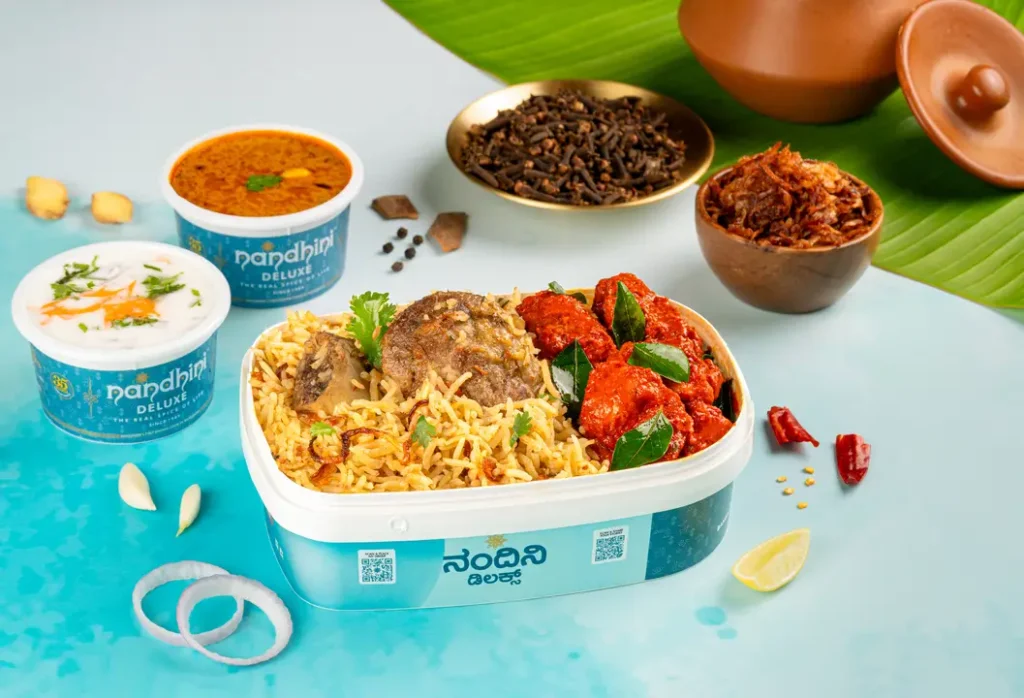
FAQs
1) What is included in an Andhra biryani family pack in Bangalore?
Most family packs include chicken, mutton, or vegetarian biryani sized for four diners, along with raita and sometimes boiled eggs or pickle tubs.
2) Are the takeaway containers microwave safe?
PP5 tubs and trays are microwave safe at medium power. CPET trays can also be used in ovens. Foil containers should be transferred to microwave-safe ware before reheating.
3) Who decides the packaging charge on delivery apps?
Packaging charges are set by the restaurant, not the aggregator platform. They are listed separately from platform fees and delivery charges.
4) How long can a family pack stay hot after dispatch?
Well-sealed trays typically retain heat for 30 to 45 minutes in transit. For longer delays, reheating in microwave-safe containers is recommended before serving.
5) What is the safest way to reheat Andhra gravies?
Reheat gravies in microwave-safe tubs with the lid slightly open, stir midway to prevent hot spots, and bring oily gravies back to a light simmer to restore texture.
Conclusion
Andhra cuisine takeaway and delivery in Bangalore balances three essentials: portion planning, container science, and cost transparency. Family packs simplify group dining with predictable serves, rice separation, and bundled sides like raita and boiled eggs. Packaging materials such as PP5 tubs, CPET trays, and foil containers determine how biryani grains and gravies survive long transit and how safely they reheat at home. Fee components—item price, packaging charge, taxes, platform fees, and delivery surcharges—shape the final bill, and clarity here prevents surprises at checkout.
Nandhini Deluxe Restaurants anchors this landscape with multiple branches, consistent Andhra flavor signals, and reliable dispatch windows. Orders flow through brand channels or aggregator apps, with family packs, combo boxes, and bulk gravies designed for both delivery and takeaway. By aligning heat preference, group size, and delivery channel, Bangalore diners can enjoy authentic Andhra flavors with minimal compromise on texture, safety, or wallet.

